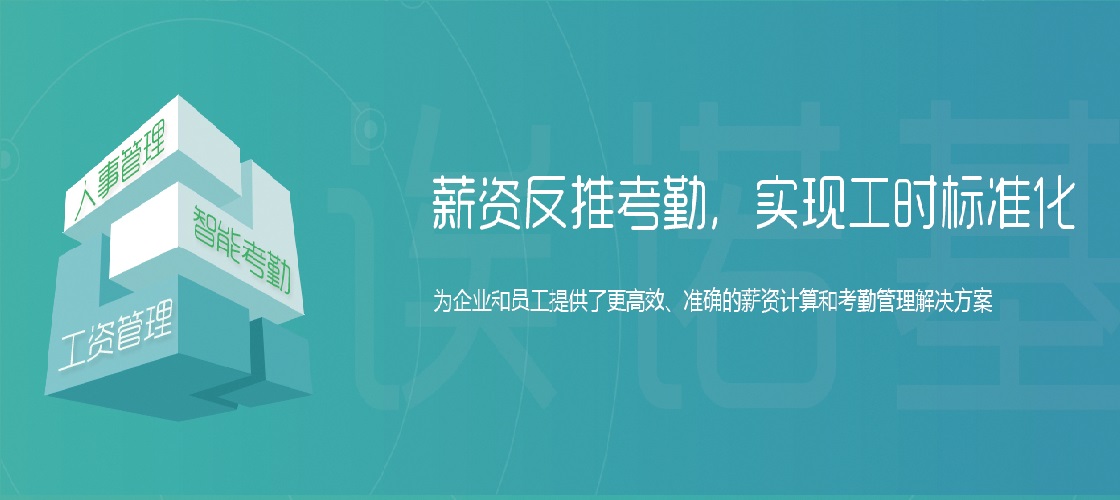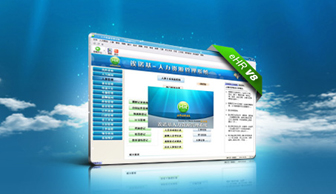How to establish a rationalization attendance attendance?
更新时间:2019-06-03 09:10:26•点击:940410 • Industry Views
For a company, how to develop an attendance management system is blind copying, or behind closed doors. Here we have to analyze from several aspects:
If the company wants to grasp the performance, then it needs to establish a set of standardized attendance assessment indicators, so that employees have a clear goal from the source; if it is disciplined, it needs a complete and reliable attendance system, including commuting Time, leave and leave system, reward and punishment system after attendance results must be improved and implemented.
Let's look at a few specific analysis of the case, what should be specifically paid attention to when the enterprise develops the attendance system:
Adapt to the characteristics of the industry and the nature of the company
A real estate company is a large-scale real estate development company, and there are 5-6 properties for sale at the same time. Due to the scattered sales staff in various sales offices, attendance has become a major problem. Sales office staff have never been there before. The customer in the room has been waiting at the door of the sales office, and the necessary preliminary work such as site layout, display, folding, form and even dressing is often not prepared, which makes the impression of the customer greatly reduced.
In order to strengthen attendance management, the HR Department has assigned a field attendant to each sales office. It can be 3 months later, and the phenomenon of being late is still there. Because the sales staff's salary is low base salary + high commission, making a single commission is very high, attendance and rewards can not enter their eyes.The sales staff really care about the amount of orders placed by customers, and the amount of orders placed by customers depends on how many customers are received.
Therefore, the company has implemented the “sales department staff to receive customers every day, and the order of the orders is in accordance with the order of arrival every day”, that is, “order order attendance system”.
Once the new regulations were implemented, the sales staff were one earlier than the other, and the picket team was spontaneously organized to maintain order so that no one would jump in the queue. The company does not need to set up attendance staff, nor set up a full attendance award, which not only reduces costs, but also achieves the purpose of employees on time.
At present, most of the enterprise attendance management adopts special personnel to supervise sign-in, commute to work or fingerprint, etc., but the effect is not good, because the attendance management is not based on the characteristics of the industry and the nature of the enterprise. In fact, enterprise attendance management is inseparable from the characteristics of the industry and the nature of the company.
Adapt to the composition and characteristics of employees
Most of the employees are young people with bachelor degree or above. They are sensitive, active in thinking, and have high enthusiasm. When they are nervous, they don’t care if they work overtime. When they are not nervous, they are sloppy, their work schedule is irregular, they can’t work on time in the morning, they work frequently and work hard. Become an excuse. At the beginning, the company adopted the method of punching attendance and late payment, although the attendance of special personnel can be unsatisfactory.
At the end of the month, the salary bonus was calculated according to the attendance results, but the boss came to say hello: this technical backbone is less deducted, and the project manager does not deduct. After two years, the unbearable attendants changed their positions, and no one was willing to take over.
To this end, the company combines the characteristics of the industry and employees, adopting the “Loke Donation System”:
Cancel the full-time attendance, and those who are late and leave early will not be deducted from any salary.
In the office and conference room, the attendance donation box is placed in front of the conference room. Those who are late are consciously donated the fund at a cost of one yuan per minute. The early leavers donate two funds per minute, and the management of the company doubles.
The funds in the donation box are accumulated and accumulated. As the funds for the collective activities of various departments, the company will provide corresponding support; if it is decremented by month, there will be another reward; if it is a group fraud, it will freeze the qualification for the group's one-year collective activity.
On the one hand, the system is lazy and lazy. On the other hand, it restricts individuals with collective power and supervises a few people with the eyes of the majority. The “Attendance and Donation System” was implemented for 3 months and was understood and recognized by the staff. The attendance was completed in a relaxed and lively tone.
The purpose of attendance management is not to punish, but to promote employees to be positive, hard work, and create value. The target is fresh, employees with different ages and academic qualifications. Their personality, needs, emotions, desires, pursuits, etc. are diversified. .
Adapt to different stages of development of the company
At the beginning of a company's establishment, it has a strong taste of human governance. All rules and regulations are formulated by the general manager and are extremely unscientific. As the scale of the company expands, the phenomenon of late arrival and early retirement of employees is becoming more and more serious. After the implementation of several rounds of attendance system failed, the general manager decided to adopt the humanized attendance system: employees are not late after 10 minutes, but not more than three times in the current month, and each time more than three times, the fine is 100 yuan.
In this regard, the staff interpret: "There are three chances to be late every month, the time is less than 10 minutes!" So there are always three or five late arrivals every day, and everyone is on the wheel, never wasting three chances to be late. In desperation, the general manager decided to remedy, that is, the implementation of the "attendance and attendance system": the company set up a team full-time award according to the department, the team that meets the monthly standard rewards 200 yuan each.
However, if all the employees in the department are late for the time to accumulate more than 10 minutes × n (n is the number of employees in the department), the staff of the department can not receive the team full attendance award in the month. The result of helpless "remediation" is that the employee's late arrival and early retreat disappeared overnight. Even if there are occasional employees who are late, most of them are for objective reasons, and afterwards they will find ways to obtain the understanding and tolerance of other colleagues in the department.
Each enterprise has its own different development stages, development history and other actual conditions. Attendance management must keep pace with the times and continuously improve and match with the development of the enterprise. The McKinsey 7S model proposes that the structure, system, style, employees, skills, strategies, and common values must be considered in all aspects of the enterprise development process, which can be divided into hardware and software. Only the software and hardware are ready to operate properly.
From the 7S model, the management system of different stages of development of enterprises is different. During the company's founding period, there are few people and work with the founders. The values and behaviors of the founders are directly radiated to each employee. However, as the company continues to develop, the values and behaviors of the founders are difficult to affect every employee. The HR department should adjust the attendance management according to the actual development stage and management style of the company.
Adapt to the company's own culture
A cable manufacturing company, the CEO is more than 60 years old, very dedicated. In the end of the year, except for a few business trips, the first one is always in the factory, the last one leaves, habitually natural, and punctual. However, many young employees are not so conscious, they happen when they are late and leave early, and they often conflict with the attendance commissioner of the personnel department.
In view of this, the expert's attendance management advice is: no attendance. Every day at work, the CEO is at the door of the factory, greet each employee to nod, smile, and ask early; when they are off, the boss sends every employee at the factory gate. The spring breeze is silent, the tangible welcoming, the invisible deterrent, the absence of attendance, and the attendance.
Under normal circumstances, the values and behaviors of entrepreneurs lay the values and behaviors of the company. Over time, the accumulated values that are shared by all members of the company, that is, the corporate culture, become the DNA of the enterprise. The best practice of enterprise management proves that management needs a combination of rigid and soft, two-pronged, rigid management system can not be reached, the need for flexible management, that is, culture to make up.
The top leaders of the company are people-oriented, take the lead, respect employees to set an example, do a good job, and culture people can touch employees, thus improving employee's attendance and work enthusiasm. Therefore, the boss's behavior of welcoming employees at the factory door expresses the company's humanized management style, exemplary leadership style, and corporate culture of humanistic care.
To sum up, each company will have an attendance system as a record and assessment criteria for employees' work. On the one hand, to standardize the company's management system, on the other hand, to ensure the company's employees reasonable and legal working hours.
Therefore, enterprises must develop an attendance system according to their own circumstances, which is not only related to the effective operation of the company, but also to protect the company's interests. At the same time, it must also understand the actual ideas of the employees and the benefits of the operation. If we are blindly pursuing corporate image, system management, and formal implementation of the system, we cannot see the problems in the operation, and we cannot balance the advantages and disadvantages of the behavior, which will cause the contrary.
Recommended Reading
-
Which AB account inspection software is good?
2023-10-31 09:47:54•1485009 次
-
Enterprise factory inspection software solution
2023-09-27 13:40:41•1571850 次
-
Solution for Backward Deduction of Factory Attendance Salary
2023-09-19 20:42:29•538496 次
-
What is eHR system? How do enterprises choose eHR system?
2019-03-29 14:28:00•1665571 次






